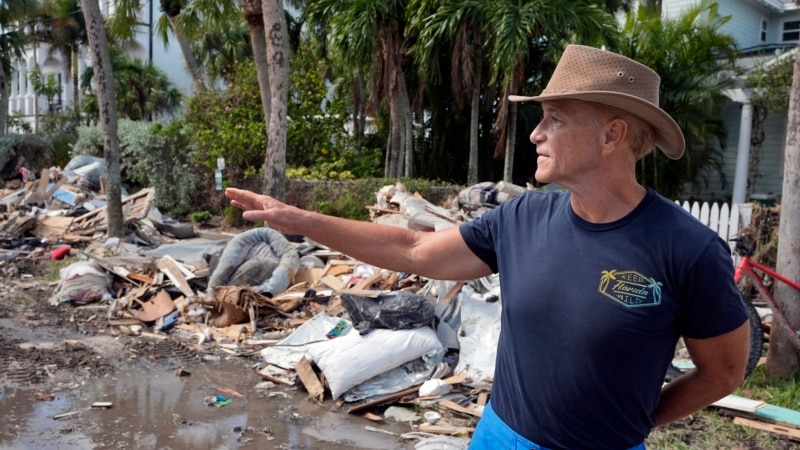The last time a storm of similar magnitude to Hurricane Milton hit Tampa Bay was in 1921, when the city was a sleepy town of a few hundred thousand people.
Today it is one of the fastest growing metropolises in the United States, with more than 3 million inhabitants and extremely vulnerable to flooding due to climate change.
As Milton moves toward Florida as a Category 4 hurricane many experts fear that a century of good fortune has ended.
Is Tampa Bay that vulnerable to hurricanes?
The United States National Hurricane Center predicts waves in Tampa Bay between 2.5 to 3 meters above normal tidal conditions, and between 10 and 15 centimeters of rain from Hurricane Milton.
The entire west coast of Florida is particularly susceptible to high waves. Last week, Hurricane Helene, which made landfall further west, about 150 miles from Tampa, caused drowning deaths in the Tampa area due to strong waves between 1.5 and 2.5 meters above normal levels. .
“If it had made landfall just a little bit further south and east, it would have been much, much worse,” said Philip Klotzbach, a hurricane researcher at Colorado State University.
The increased susceptibility is due in part to topography. Florida’s coast on the Gulf of Mexico is shallow, with a gently sloping slope. The higher seabed acts as a barrier that holds back storm water, causing the water to overflow onto the surface.
The opposite is true on the eastern coast of Florida, where the seafloor drops suddenly a few miles from the shore.
“You can have the same storm, the same intensity, the same everything, but very different waves,” Klotzbach observed.
A 2015 report by Karen Clark and Co., a Boston company that specializes in natural disaster forecasting, concluded that Tampa Bay is the place in the United States most vulnerable to flooding from a hurricane and could see $175 billion in damage. dollars in damages.
Are residents ready for this storm?
While Floridians are no strangers to storms, Tampa has not been in the path of a major hurricane in more than a century.
In that period, the area has had explosive growth. Tens of thousands of people have moved there during the COVID-19 pandemic, many of them to islands near Clearwater and St. Petersburg, above the usually placid, emerald waters of the Gulf.
More than 51,000 people moved there between 2022 and 2023, making it the fifth-fastest-growing metropolitan area in the United States, according to census data.
Longtime residents, after numerous false alarms and nearby storms like Irma in 2017, may not be prepared for a direct hit. Legend has it that blessings from Native Americans who lived in that area and who built mounds to scare away invaders have protected the place from strong storms for centuries.
MIT meteorology professor Kerry Emanuel said a hurricane in Tampa is like “a black swan,” the worst-case scenario that experts have warned about for years.
“It is a large population. It is very exposed and very inexperienced, and that bodes badly,” said Emanuel, who has studied hurricanes for 40 years. “I always thought Tampa was the city we should worry about the most.”
What was the last storm to hit Tampa?
Almost inexplicably, the storms have bypassed Tampa: Most of the events in the Gulf have affected areas far north of the city.
The last time the Tampa area was hit by the eye of a major hurricane was on October 25, 1921. The hurricane had no official name, but today it is known as the Tarpon Springs Storm, after the coastal town where he entered.
The waves generated by that hurricane, estimated as category 3 with winds of 207 kph, were calculated at 3.3 meters. At least eight people died and damage amounted to about $5 million.
Today, the tourist area famous for its white sand beaches has grown rapidly, with an estimated economy of almost $200 billion. Hurricane Milton threatens to wipe out all that development.
Connect with the Voice of America! Subscribe to our channels YouTube, WhatsApp and to the newsletter. Turn on notifications and follow us on Facebook, x and instagram.



![[Img #74675]](https://thelatestnews.world/wp-content/uploads/2024/12/They-discover-a-new-class-of-X-ray-sources-in-the-150x150.jpg)












Add Comment